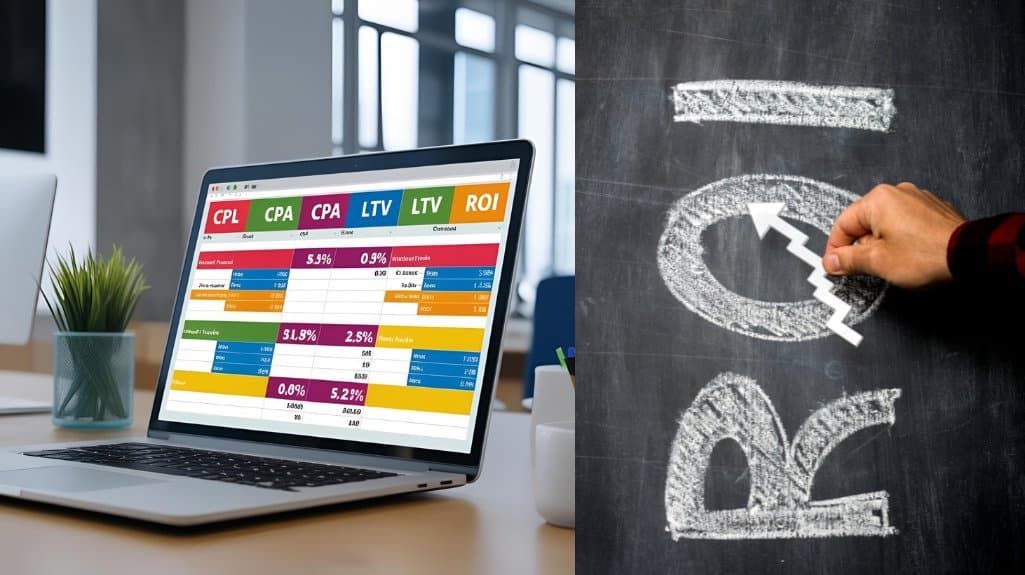Why numbers matter more than perceptions
A "pretty" campaign that doesn't convert is an expense in disguise. To know if your investment is working, you need to master the basic metrics and their formulas. Without concrete math, any optimization is guesswork.
1. Cost per Lead (CPL)
Formula: CPL = Total campaign expenditure ÷ Number of leads
Practical example:
- Expense: $1,500 USD
- Leads: 120
- CPL: 1,500 ÷ 120 = $12.50 USD
Benchmark goal:
- High ticket clinics (surgery, fertility): CPL < $25
- Outpatient services (general consultation): CPL < $10
If your CPL is above, check segmentation, copy and landing page.
2. Landing page conversion rate (CVR)
Formula: CVR = Leads ÷ Visits × 100 %
Example:
- Visits: 2,000
- Leads: 120
- CVR: 120 ÷ 2,000 × 100 = 6 %
Recommended target:
- Informative Landing with short form: 8-12 %
- Complex or multi-product page: 3-5 %
A low CVR indicates that your message, CTA or form does not connect.
3. Cost per Acquisition (CPA)
Formula: CPA = Total Expenditure ÷ Patients Scheduled
Example:
- Expense: $1,500 USD
- Patients: 40
- CPA: 1,500 ÷ 40 = $37.50 USD
Compare this value to the average ticket. If you sell a $1,200 procedure, a CPA of $38 is excellent; if your practice costs $60, the strategy should be adjusted.
4. Average Revenue Per Patient (ARPU)
Formula: ARPU = Total revenues ÷ Number of patients
Example:
- Monthly income: $48,000 USD
- Patients: 40
- ARPU: 48,000 ÷ 40 = $1,200 USD
Increasing ARPU - for example, with upsells (annual checkup, teleconsultation, additional tests) - can improve ROI without increasing ad spend.
5. Patient Lifetime Value (LTV)
Simplified formula: LTV = ARPU × Average future visits per patient
Example:
- Starting ARPU: $$1,200 USD
- Average number of follow-up visits: 2
- LTV: 1,200 × 2 = $2,400 USD
Basing investment decisions on LTV, not just ARPU, allows you to scale campaigns with higher CPAs if the return over time justifies it.
6. Return on Investment (ROI)
Formula: ROI = (Revenues - Expenditure) ÷ Expenditure × 100 %
Example:
- Revenue: $48,000 USD
- Expense: $1,500 USD
- ROI: (48,000 - 1,500) ÷ 1,500 × 100 = 3,100 %
An ROI > 300 % is generally considered healthy in high-value medical services.
7. Frequency of response and contact rate
- Response time: minutes or hours from the lead to the first message.
- Effective contact rate = Leads responded ÷ Total leads.
Reducing the response time from 24 h to 2 h can double the contact rate and improve the CPA, without touching the ad budget.
How to use these metrics in daily decisions
- Adjusts bids and segmentation when the CPL grows 20 % over your target.
- Optimize the landing page if the CVR falls below 5 %.
- Budget scale if the ROI remains above 400 % for two billing cycles.
- Follow-up redesign if the effective contact rate is less than 60 %.
Accounting tools
- Google Analytics 4: visits, CVR, behavior.
- CRM (HubSpot, Monday, Zoho): leads, patients, LTV.
- Unified reporting (Google Looker Studio): dashboard with CPL, CPA and ROI in real time.
Conclusion: become the CEO of your numbers.
It doesn't matter how "pretty" your ads or website look. If your metrics don't close, your marketing is broken. Calculate CPL, CPA, LTV and ROI every week. Adjust campaigns with math, not hunches.
At Torres CreativeWe implement metrics dashboards and automations that turn your medical marketing into a predictable patient and return machine. Contact us to audit your numbers and optimize them from the first month.





